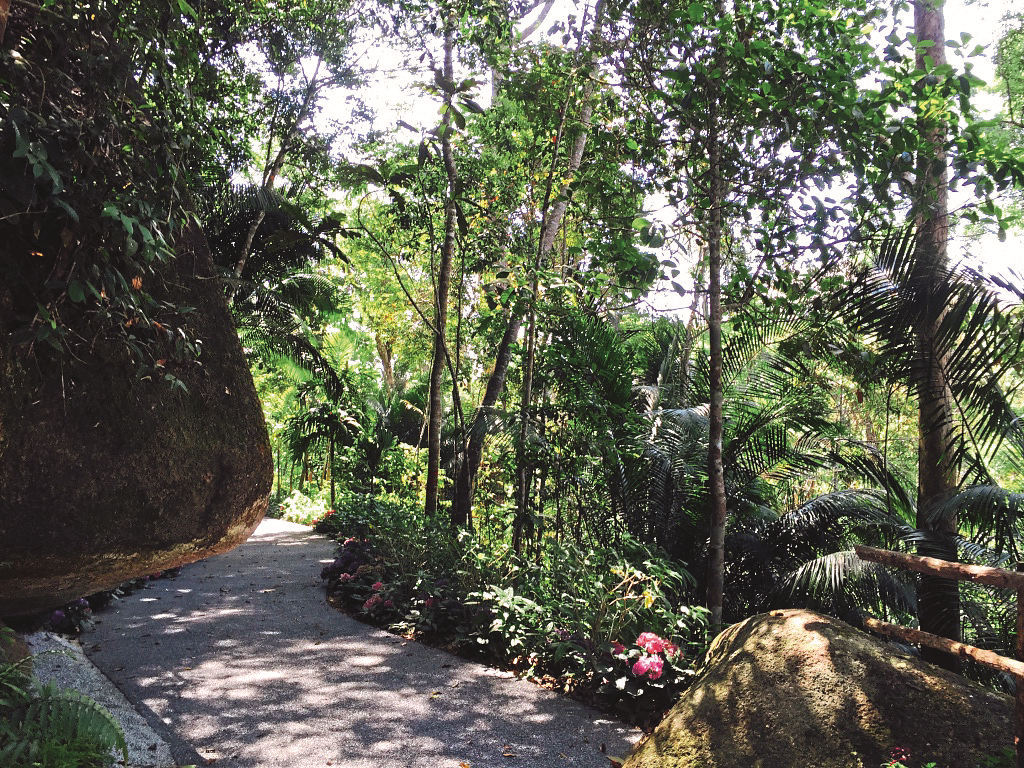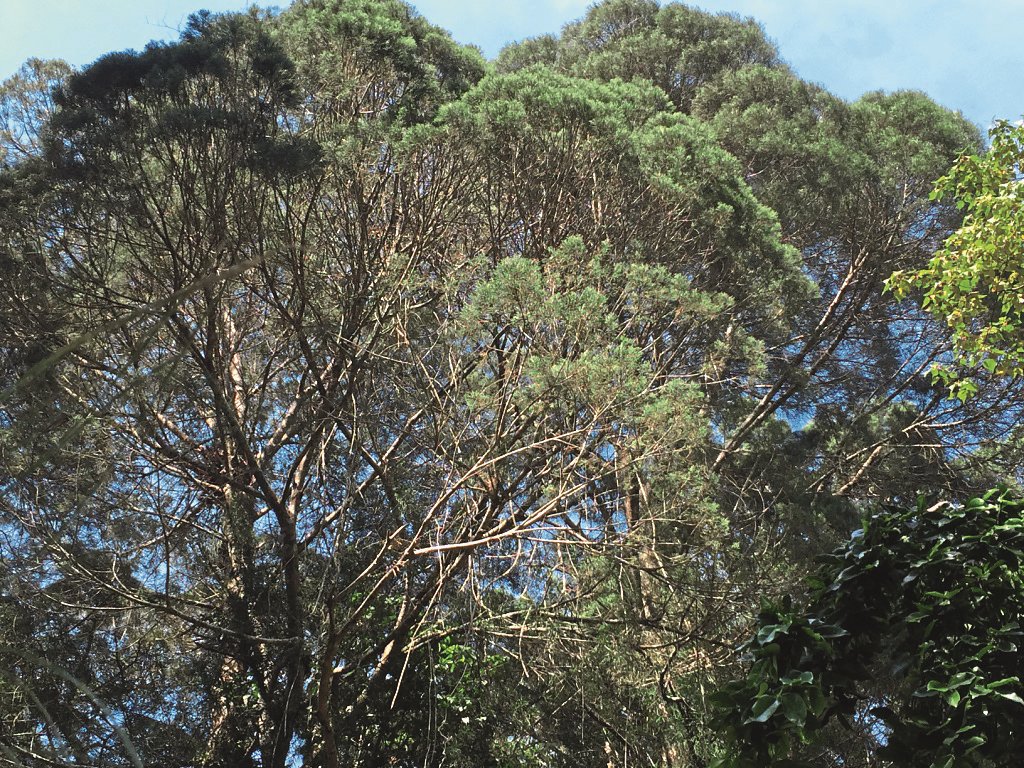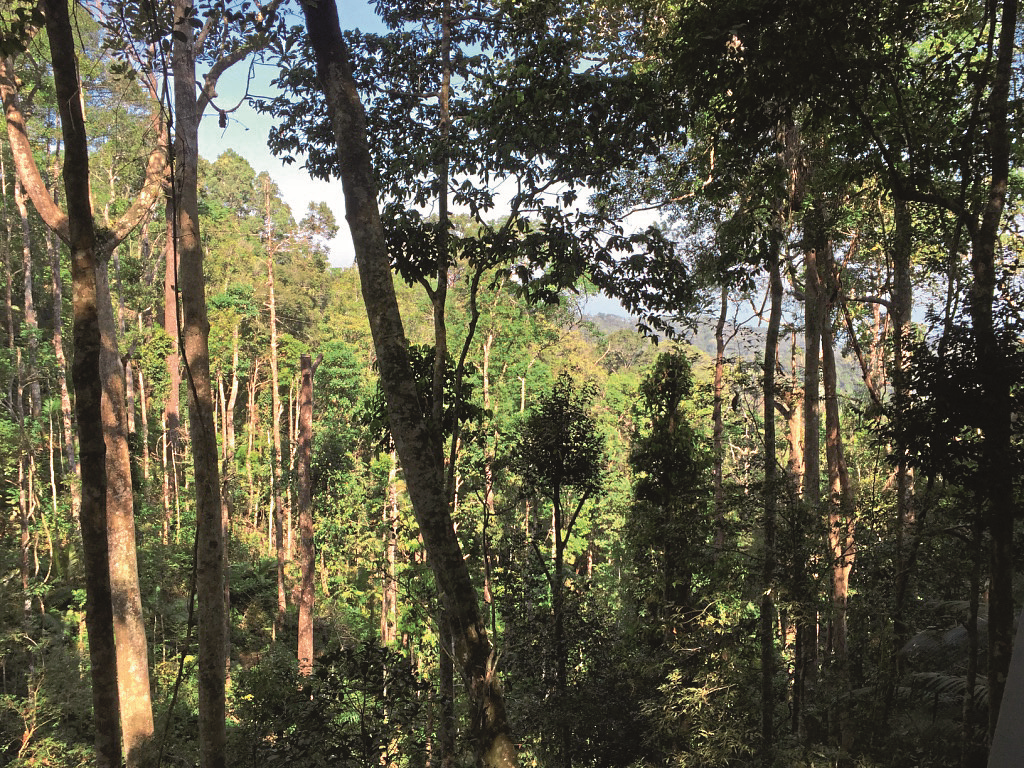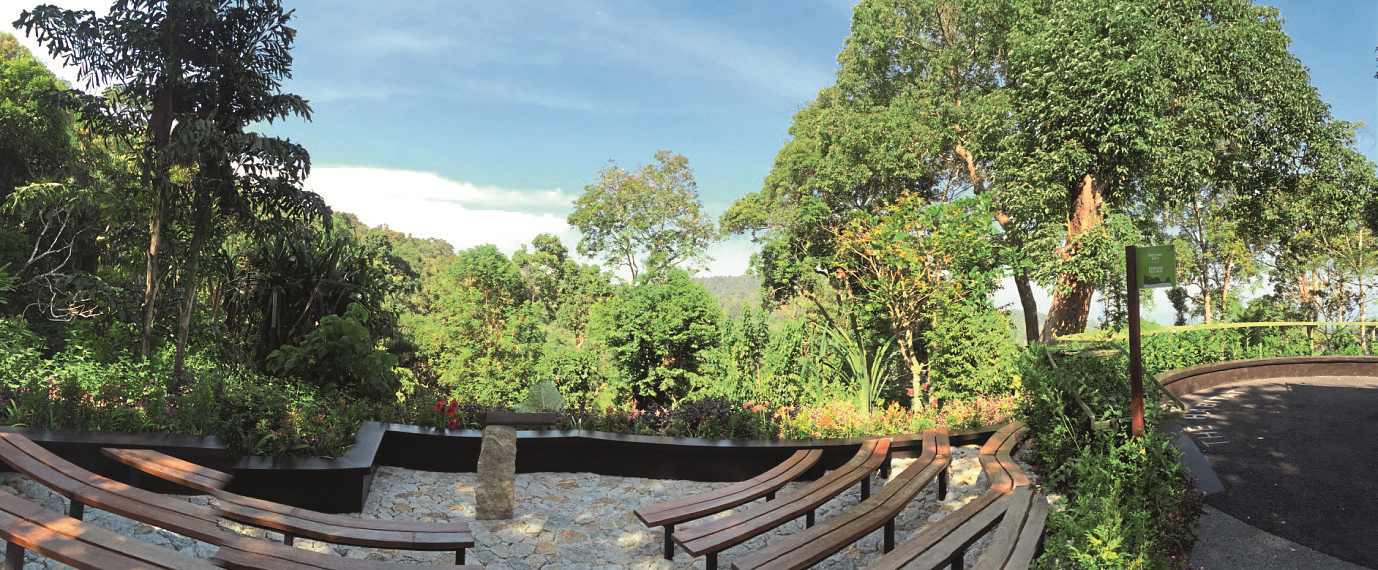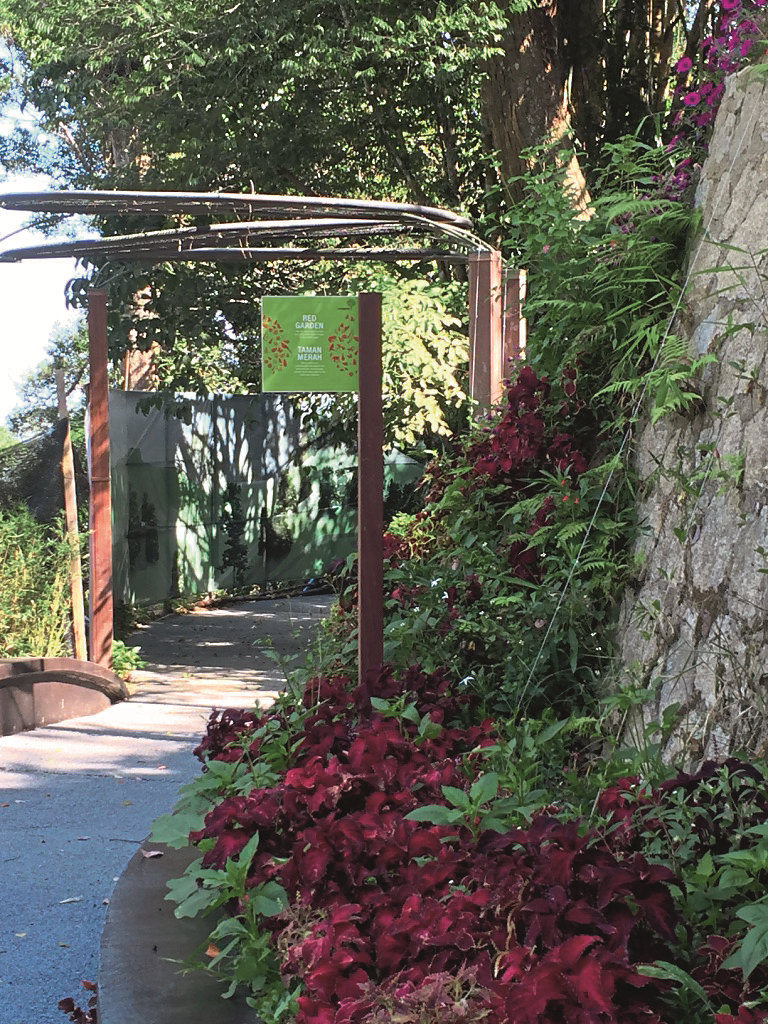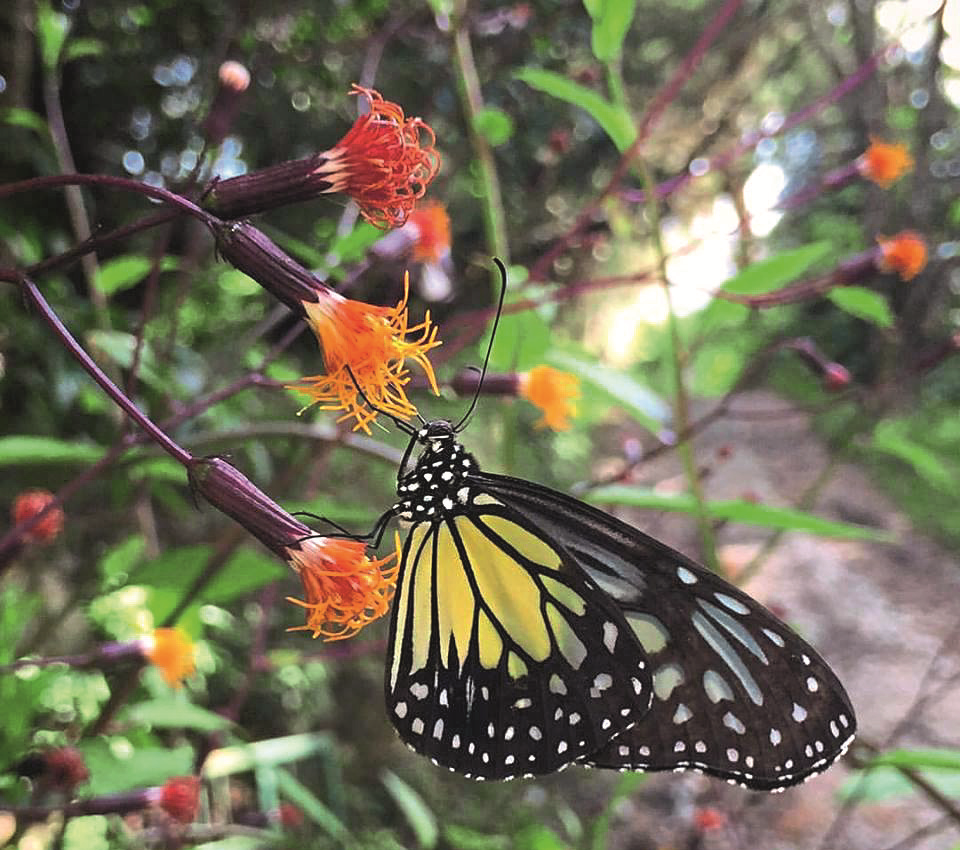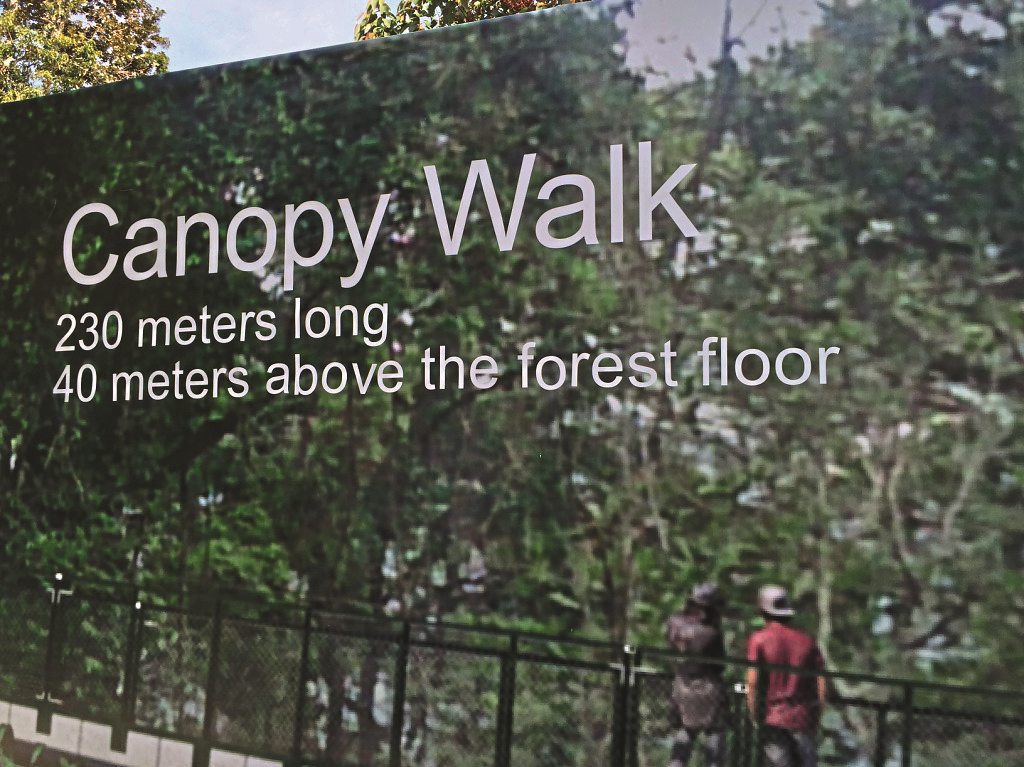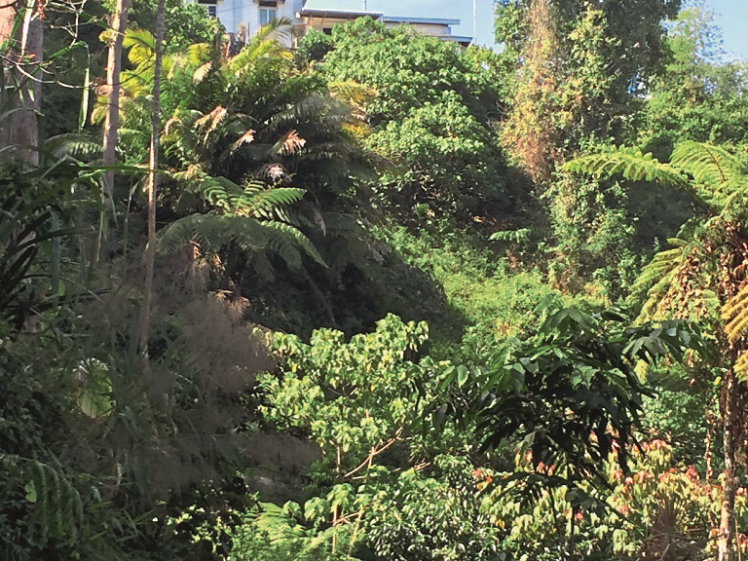Austen Wilks visited the new Habitat and found a window into the deep past coupled with a concern for the future of the environment contained within the breathtaking vistas of a fragrant jungle walk.
The Habitat is a new Penang Hill experience starting just a few steps from the top of the speedy funicular railway. Walking past the bustling food-court and the obvious tourist attractions you suddenly come across the oasis of calm and tranquillity that lies just beyond the Bellevue Hotel.
Instead of the work of man which you see looking east – the gleaming new buildings, the glistening bridges, and all the evidence of human development, you look west into a landscape that hasn’t changed for millennia.
Amazingly this rainforest hasn’t been touched by human development. Much of the jungle we think of as virgin is in fact “secondary,” meaning that it has been cleared at some time for plantations which have since been abandoned and the jungle has re-grown.
But this is a truly primeval landscape and Freddie Walker, of Walker and Janssen, who has been the driver for the project along with his wife Frederique, says, “It’s quite impenetrable in places without cutting – which we wouldn’t do. Instead we have created a gentle walk with framed vistas so that you can experience the forest and its wildlife from a comfortable perspective.”
The forgotten landscape
In fact it must be much the same sort of feel that the early settlers of Penang experienced when they came up here in the late 18th century. They farmed strawberries and other fruits and vegetables that grow at higher altitudes. Carried up in sedan chairs, Penang Hill was their escape from the intensity of the tropical heat before the days of air-conditioning.
In later years the colonialists built bungalows for cool weekends and longer stays on the various spurs of the summit. Most of them are still there but many of them are in a sadly dilapidated condition awaiting the magical touch of a fairy wand to bring them back to life as sensitively restored boutique hotels. Two of them are visible from the Habitat – the magnificent Convalescent and the lovely Fernhill.
Although the landscape it looks over is immeasurably older, the actual site of the Habitat is, in its way, a heritage. The land hasn’t been touched since 1911, which gives it a very fresh natural feel. Walker and Janssen have created a walkway through the jungle that you can meander along in 45 minutes, or if you’ve the time, take a couple of hours to traverse, stopping to rest and admire the view and listen to the jungle sounds.
Walking the trail
The walk is a feast for the senses. You are assailed by the vivid colours and intricate patterns of both flowers and butterflies. You start to appreciate just how many variants of green there are in nature and how harmoniously they blend together.
You hear the chatter of unseen monkeys and, if you are lucky, catch a glimpse of a shy giant squirrel with its long furry tail scurrying along the branches. You see the flash of a bird – it might be a Rackettailed Drongo or an Asian Fairy-Bluebird or something even more exotic.
You start to be able to smell the invigorating aroma of truly fresh air, occasionally spritzed by the gorgeous scents of some flowering bushes. The Kids Walk will offer the experience of some wild fruits and leaves to be eaten – but this must be done with a guide only.
Frederique Walker calls my attention to the marvel beneath my feet that I had neglected to notice. “It’s a hydromedia pathway,” she tells me. “If you concrete the earth, water cannot flow through it and so you create soil erosion and other problems. But this special substance enables water to flow through the path naturally. So we make minimum impact on the land.’
Another fact I didn’t realise was that it takes more water to create a plastic bottle than the bottle holds. So plastic water bottles are banned in the Habitat, but you can bring you own re-usable bottle from home or buy one from the Habitat – a bottle for life – which you can refill at any of the many wooden water stations along the pathway. In a few years, this will probably be commonplace, just as we’ve all got used to re-using our shopping bags.
The path follows the contour of the hill, which means that the incline is very gentle and suitable for almost everyone to take at their own pace. There are plenty of places to rest and there are themed gardens to enjoy along the way.
They include: the Red Garden, the Butterfly Bank, the Bromeliad Garden, the Orchid Garden, the Purple Garden, and the Ginger Grove. You can also relax on one of the two giant swings and feel the cooling breezes from the distant Andaman Sea.
Frederique `Walker takes a side path to show me an attraction that they are developing in the grounds adjacent to Bel Retiro, in former days the Governor’s mansion. In a circle of ancient conifers, which was possibly an experimental garden for the Botanic Gardens, plans are underway for a viewing platform, 13 metres high. It will be the highest spot in Penang and will have a 360-degree view so you will be able to see the entire island and, on a clear day, Langkawi and much of the Kedah coastline.
The future and the past
The Habitat is now in Beta Mode, waiting for the Grand Opening, scheduled for August of this year. They are working to complete the most stupendous attractions – including aerial bridges and fantastic zip lines. In fact, the zip line will be the longest zip line in the world over a rainforest.
There are plans also for museum of the past – showing something of the heritage of Penang Hill and educating people about the importance of protecting the environment for future generations. But it’s worth a visit even without these exciting activities – because the sense of peace, coupled with the delight of the senses, makes it a wonderful place to spend time.
As I walked back to the funicular railway, I reflected that the planet itself will survive the pollution and destruction that human beings are wreaking upon it. After all, time is on its side. One day the mighty Himalayan mountain chain, of which Penang is just one of its far-flung granite tails, will be ground down to dust.
The planet has millions of years to repair itself, but human beings do not. If we don’t wake up to the damage we are doing we may find the planet rather inhospitable. The Habitat, in the gentlest of ways, reminds us of the need to care for our own home.
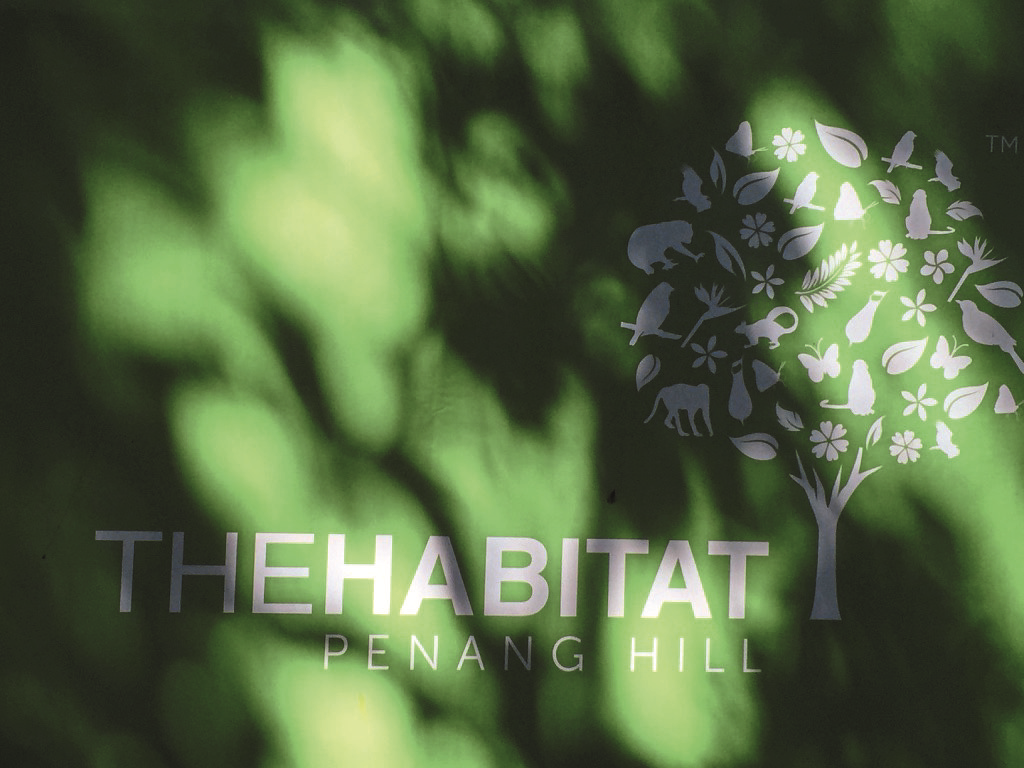
Location
Operation hours: The Habitat is currently in ‘Preview’ mode. It’s closed on Tuesdays and Wednesdays but open every other day from 10am to 5pm.
Tel: +604 – 826 7677
Website: thehabitat.my
This article was originally published in The Expat magazine (April 2016), which is available online or in print via a free subscription.
"ExpatGo welcomes and encourages comments, input, and divergent opinions. However, we kindly request that you use suitable language in your comments, and refrain from any sort of personal attack, hate speech, or disparaging rhetoric. Comments not in line with this are subject to removal from the site. "



